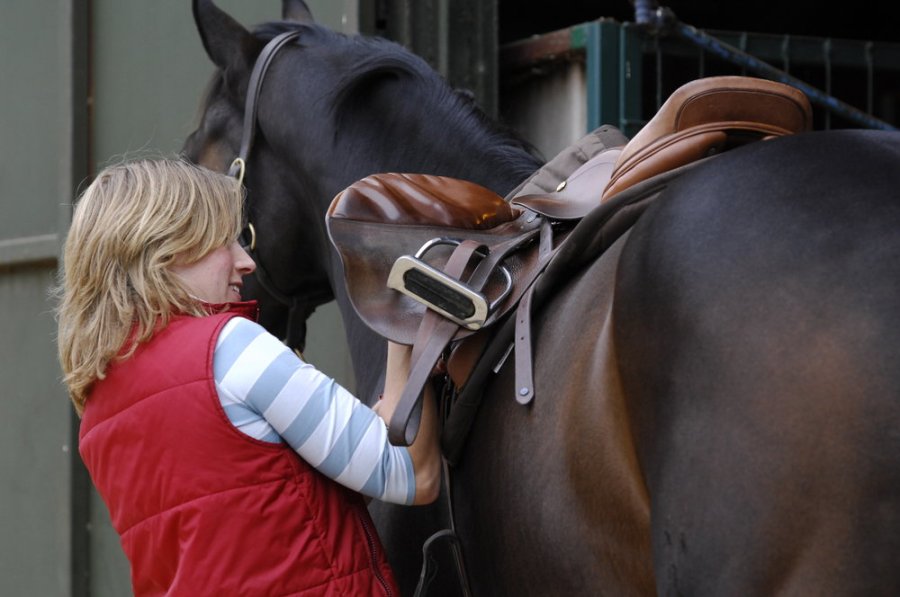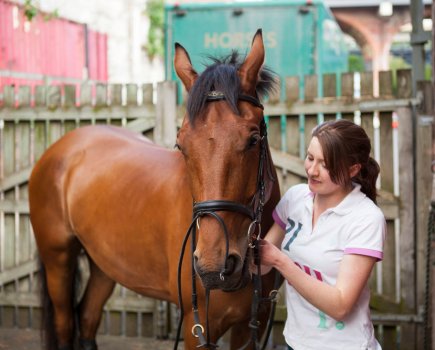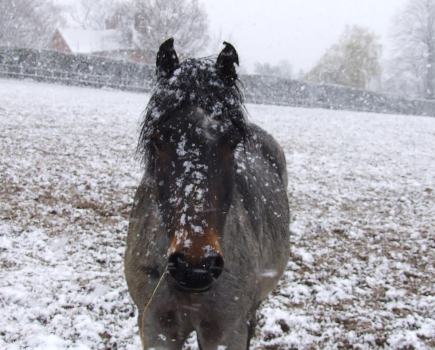Buying a saddle isn’t easy: the choice of saddles for horse and ponies is huge, the price tags are hefty and there’s a lot to consider in order to find the best one for you and your horse. It won’t be until you actually ride in the saddle that you’ll know whether it’s the right one, but there are things to think about before you get to this stage to help make the decision process easier.
Firstly, take a bit of time to consider exactly what it is you want in a saddle; secondly, set your budget — and stick to it. It’s so easy to get carried away in the moment and end up spending far more money than you want to; remember the second-hand saddles market is large and a great place to look too. Different types and brands of saddles fit some horses better than others; be led by fit, not cost — expensive doesn’t always mean better.
Types of saddle
With your budget decided, you need to decide what type of saddle you’re going to be shopping for:
General purpose (GP) saddles
General purpose saddles are designed so you can do most disciplines in them, from hacking to jumping and dressage. Many riders will go for this option, as it means you only need one saddle. However, if you compete regularly you may consider looking at a discipline-specific saddle to give you the support and security you need.
Dressage saddles
As the name suggests, a dressage saddle is designed for dressage and flatwork. The saddle flap is longer and straighter, encouraging you to ride with a long leg position and the seat tends to be deeper to help you maintain a correct position. There’s the option of having large fixed knee blocks through to smaller moveable blocks so you can find the most comfortable position for you. To enable you to have a closer leg contact, the girth straps are long with the buckles beneath your foot so that there is no bulk under your leg. The buckles are much lower down compared to a GP saddle, which may mean you need a helper on the ground to tighten your girth for you.
Jump saddles
A jumping saddle is more forward cut so you can ride with shorter stirrups and still have support for your knees. This style of saddle will normally have knee and thigh blocks positioned to help you stay secure and supported when jumping. A jump saddle often has a flatter seat compared to other styles, to give riders a little more freedom when riding cross-country. I remember leaning right back as my horse leapt down a drop once, and my body protector caught on the cantle of my GP saddle. It knocked me off balance and I managed to stay on (just!) — swapping to a jumping saddle with a flatter cantle fixed the problem.
Showing saddles
A showing saddle is designed to complement a horse’s conformation. They tend to be straight cut and basic in design, so they allow total freedom of movement and show your horse off at their best — imperative in the show ring.
Leather saddle or synthetic saddle?
The material your saddle is made from is another important consideration in your buying-a-saddle journey. Leather saddles are still the preferred choice for a lot of riders and there are many different types of leather used to make saddles, from some that give you a grippy feel to softer, smooth leathers. You can expect to pay more for a leather saddle, and you will need to look after it well. Regular cleaning and conditioning is required to keep your saddle in good condition. Take good care of your leather saddle and it will last for years.
Leather saddles are usually heavier than synthetic, but this does depend a little on the tree that’s used. Thanks to the use of modern materials, synthetic saddles now look like leather but are lightweight, durable and easy to look after — a quick wipe with a damp cloth does the job. The other big advantage of a synthetic saddle is the price tag; they are considerably cheaper than leather. There are some great options for synthetic saddles from Thorowgood, Tekna, Wintec, Collegiate and Premier Equine.
If you’re not convinced a synthetic saddle is for you, there are a few manufacturers that produce saddles that use both leather and synthetic materials:
- Tekna’s LeTek range combines the softness of leather with the durability and low maintenance of synthetic material. The seat, seat flap, flap and upper panels are made from leather. The underflap and bottom panels are synthetic.
- Thorowgood T8 Saddles have quality leather on the seat, kneepads and trim to give the feel of an all-leather saddle.
- John Whitaker International produces a range of saddles that include the Harrogate dressage, Bedale GP Jump and Overton Jumping that are a leather and synthetic mix. The outer is covered in soft, comfortable, durable leather while the under-panel of the saddle is made from a synthetic, wipe-clean material.
Saddles with a changeable gullet
The overall design of saddles and the methods used to make them have changed very little over the years. Most saddles are handmade by highly skilled craftsmen, many of them in the UK. What has changed is the development of clever modern features that enhance the fit of the saddle. The aim of these is to make sure you and your horse are as comfortable as possible so you can both concentrate and enjoy yourselves.
A saddle with a changeable gullet enables the width of the saddle to be altered quickly and easily if your horse changes shape. Essentially, this could mean that one saddle will last your horse a lifetime, or if you buy a new horse, it could mean that your saddle can be altered to fit them too, saving you money on buying a new saddle.
Many of the well-known saddle brands produce saddles with changeable gullets, including:
- Wintec
- Thorowgood
- Bates
- Fairfax
- John Whitaker International
- Tekna
- GFS
- Collegiate
- Kent & Masters
Albion Saddlemakers developed its Adjusta-Tree, which is believed to be the first British precision-engineered adjustable wooden saddle tree. The Adjusta-Tree has been specifically designed for adjustment using pressure by any Albion saddle fitter. The fitting can be altered without damage or distortion to the headplates or rivets of the tree using Albion-approved pressure systems, while the train remains within the saddle.
The Platinum range from Albion Saddles goes one step further, with an interchangeable tree and a switch panel that allows the width and the saddle panels to be changed for improved fit. These can only be changed by an approved Albion stockist.
The Easy-Change Fit Solution in Wintec and Bates saddles allows you to select the optimal tree width for your horse’s current shape and muscling with the Easy-Change Gullet System, or make adjustments to the saddle panel for optimal balance and clearance with the Easy-Change Riser System.
Saddle flocking
Wool is the most widely used material for flocking saddle panels. Flocking can easily be added or removed to ensure a good fit by a qualified saddle fitter. However, there are a few alternatives. CAIR Cushion System in Bates and Wintec saddles is two independently sealed air cushions in each saddle panel, with the air providing cushioning for your horse. Being a fluid medium, air constantly adapts to your horse’s muscles as they work. Once you are in the saddle the air moves to hug your horse’s shape and distributes your weight evenly over the entire bearing area of the saddle panel. This eliminates pressure points, supports muscles during work, absorbs shock and aids correct muscle development.
Flair panels is a system of four adjustable airbags (two at the front, two at the back) that replace the flocking your saddle. These provide a soft, flexible and even weight-bearing surface and can be fitted to all conventional saddles. Each individual airbag can be altered to give a customised fit. Flair panels give your saddle a constant flexible layer of air that absorbs shock, allowing your horse to move more naturally because the muscles of his back and shoulder aren’t restricted.
Buying a second-hand saddle
There is a huge market for second-hand saddles, and well worth considering if you are on the look out for a new saddle. The perk, of course, is that you can often pick up a really nice saddle for a much lower price than buying it new. Saddle fitters often keep a selection of second-hand saddles, which they will bring with them to a saddle fitting. This is a good way to buy second hand, as you know you’ll be buying a saddle that is in good working order and it will be checked as being a good fit for you and your horse.
There are also a few online companies that specialise in second-hand saddles. They have a large selection available and offer a trial period and fitting service too. Take a look at The Saddle Bank and Saddles Direct.
If you are buying privately — saddles are often sold between riders at yards or via social media and online adverts — run through our list of things to check before parting with your money:
1 How does it look?
Assess the overall appearance of the saddle. If it’s been well looked after, the leather should feel soft and supple.
2 Is it worn?
Check for areas of wear. Girth straps are the most likely place to show cracked or worn leather/material.
3 What’s the damage?
Look for any scuffs, scratches or damage to the pommel and cantle. These could indicate the saddle has been dropped or damaged.
4 Check the tree
Check the tree isn’t broken by holding the saddle lengthwise with the pommel against your thigh. Grip the cantle and gently pull it towards you. A sound tree will flex a little, but if there’s an excessive amount of give, it may mean the tree’s damaged and shouldn’t be used. If you’re unsure, ask a qualified saddle fitter to check it for you.
5 Has the saddle had work done?
If you see signs of repair, ask the seller why and when this was done.
6 Look out for rot
Check for signs of loose or rotting stitching on your girth straps and d-rings.
7 Quiz the seller
What has the saddle been used for and how often in the past? Has it ever been dropped? How has it been stored? Why are they selling it? They may not tell you the truth, of course, but it’s good to try and get a good understanding of the saddle’s background.
8 Try it on your horse
You don’t truly know whether a saddle is going to fit your horse well, until you’ve ridden in it. This can be tricky to negotiate if you are buying privately through an online advert, but it’s really important to make sure the fit is spot on. Arrange for a qualified saddle fitter to come out and assess it for you. If you can have the saddle on trial or with the arrangement of a refund if it doesn’t fit, that would work well. Otherwise, you may need to take your horse with you to pick the saddle up.








